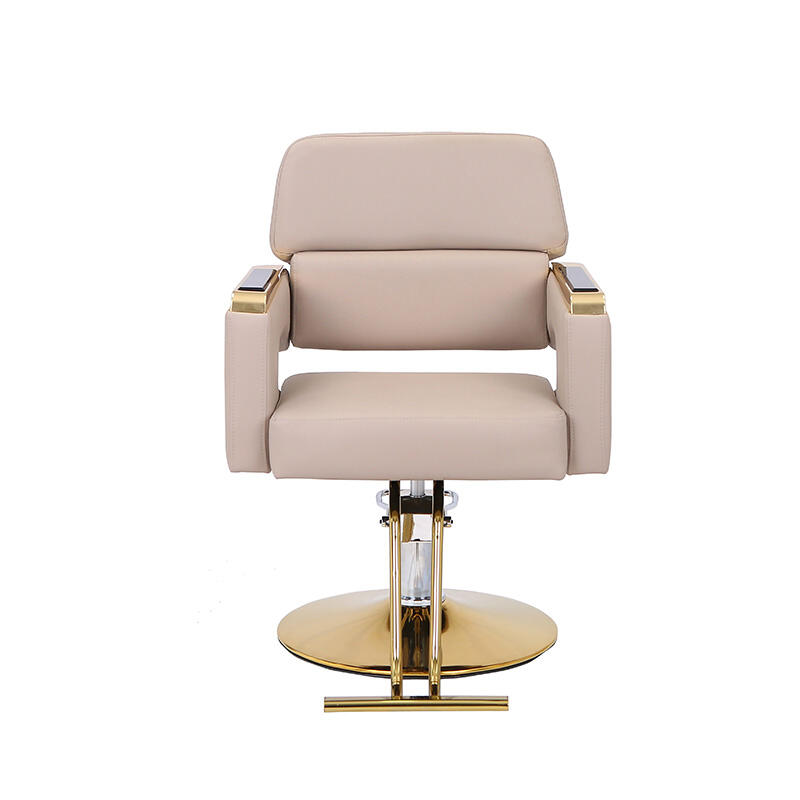Durability and Mobility in Salon Trolleys
Material Quality and Its Impact on Salon Trolley Durability
Stainless Steel vs. ABS Plastic: Long-Term Resilience in Professional Salon Environments
Salon trolleys typically come made from either stainless steel or ABS plastic, and these materials handle wear differently over time. When put through lab stress testing, stainless steel holds up remarkably well, maintaining about 98% of its original strength even after 10,000 simulated load cycles. High quality ABS plastic manages around 82% retention under similar conditions. This makes a real difference in busy salons where tools get moved constantly throughout the day and exposed to various chemicals that gradually break down materials. The extra durability of stainless steel becomes especially noticeable in such environments.
| Material | Avg. Lifespan | Corrosion Resistance | Weight Capacity |
|---|---|---|---|
| Stainless Steel | 8–12 years | High (0% rust in humid tests) | Up to 44 lbs/shelf |
| ABS Plastic | 4–6 years | Moderate (25% surface degradation after 500 cleanings) | 22 lbs/shelf |
How Material Choice Affects Maintenance Costs and Replacement Frequency
Data from 320 UK salons reveals stainless steel trolleys incur 62% lower annual maintenance costs (£120 vs. £315 for plastic models). The non-porous nature of surgical-grade steel resists deep staining from hair dyes and disinfectants, reducing daily cleaning time by 18 minutes per workstation (Salon Equipment Trust 2024).
Hygiene and Corrosion Resistance: Advantages of Stainless Steel in High-Moisture Settings
Stainless steel’s chromium oxide layer provides inherent antimicrobial properties, achieving 99.9% bacterial reduction between clients according to EHPA sanitation guidelines. This is especially valuable in wet areas, where plastic joints can trap moisture and create microbial hotspots.
Load Capacity and Structural Integrity: What Lab and Field Tests Reveal
Independent weight-distribution studies found steel trolleys remain stable with 32 lbs unevenly distributed, while comparable plastic units begin to wobble at just 19 lbs. Reinforcement ribs in newer ABS designs improve performance by 27%, but still fall short of steel’s natural rigidity.
Debating Lightweight Plastics: Are They Compromising Durability for Portability?
ABS plastic trolleys weigh 41% less than steel models (9.3 lbs vs. 15.8 lbs avg.), appealing to mobile stylists. However, they experience 3.2× higher repair rates due to impact damage. In stationary settings, the durability gap narrows, and hybrid polymer-steel frames offer a promising balance of strength and portability.
Mobility Features That Enhance Salon Trolley Performance
360° Swivel Casters: Enabling Smooth Maneuverability in Tight Salon Spaces
Salon trolleys with those 360 degree swivel casters really cut down on the physical stress for hairdressers since they can roll around stations without fighting against wheels stuck in one direction. According to the latest Salon Productivity numbers from 2024, almost 4 out of 5 stylists who switched to these casters saw their service times drop by about 12 minutes per client because they spend less time moving equipment around. What makes these casters so good is how they spin anywhere without getting caught on power cords or bumping into chairs and counters. This matters a lot in smaller salons where space is tight, especially places that are less than 800 square feet in size where every inch counts.
Polyurethane vs. Nylon Wheels: Comparing Floor Compatibility and Wear Resistance
| Material | Hard Floor Durability | Carpet Resistance | Noise Level |
|---|---|---|---|
| Polyurethane | 8,000+ cycles | Moderate grip | Silent |
| Nylon | 12,000+ cycles | Poor grip | Squeaks |
| Polyurethane wheels absorb vibrations better, protecting hardwood floors, while nylon performs well on tile. With 92% lower noise output (BeautyTech 2023), polyurethane is preferred in upscale environments focused on ambiance. |
Optimal Caster Size for Different Flooring Types
- Carpet: 75–100mm wheels prevent sinking
- Tile: 50–75mm rigid casters minimize debris trapping
- Hardwood: 50mm soft-rubber wheels protect finishes
Swivel vs. Rigid Wheel Configurations: Balancing Agility with Stability
- Swivel front/rear: Enables tight turns but may drift if unlocked
- Dual-locking casters: Provide mobility during transport and stability when stationary
The Mobility Paradox: Preventing Accidental Displacement in High-Traffic Salons
Weighted bases (6–8kg added) reduce trolley drift by 40% without sacrificing maneuverability. For trolleys under 15kg, silicone wheel brakes increase friction by 55% on laminate floors–ideal for busy salons where accidental bumps are common.
Engineering Stability and Ergonomic Design for Professional Use
Lockable Casters: Ensuring Safety and Precision During Styling Services
Lockable casters prevent unintended movement during color applications or chemical treatments–critical when handling liquids near clients. Industry safety reports indicate stylists using non-locking wheels experience 27% more spills (CPSC 2021), underscoring their importance in fast-paced environments.
Frame Design and Weight Distribution: Keys to Trolley Stability Under Load
Proper frame design ensures even weight distribution, minimizing tipping risks when loaded with heavy tools and products. Lab testing shows center-aligned weight placement increases load capacity by 18% over front-loaded configurations, supporting safe transport of up to 50 lbs.
Ergonomic Handle Height and Grip Materials for Reduced User Fatigue
Adjustable handles (32"–38" height range) accommodate most professionals, reducing shoulder strain during long shifts. Silicone-coated grips reduce hand fatigue by 30% compared to hard plastics in peer-reviewed ergonomic studies (Hall-Andersen & Broberg 2014), making them ideal for repetitive tasks.
User-Centered Design: How Comfort Improves Efficiency Over Long Shifts
Ergonomic design principles emphasize minimizing wrist pronation during tool retrieval, which can boost styling speed by 22%. Angled trays and contoured slots reduce unnecessary movements, directly enhancing productivity in high-volume salons.
Real-World Performance: Case Studies of Top Salon Trolleys
Case Study: Stainless steel trolleys in a high-volume urban salon setting
A 12-month study of 34 urban salons found stainless steel trolleys maintained 98% structural integrity despite use by 15+ stylists daily. These models had 72% lower repair costs than ABS alternatives (2023 Salon Equipment Durability Report). Non-porous surfaces also reduced bacterial contamination by 41% in swab tests–key for compliance-focused operations.
Field report: Mobile stylists’ preferences for compact, lightweight salon trolleys
Among freelance hairstylists, 62% prioritize trolleys under 25 lbs with nested storage, accepting only a 12% reduction in load capacity for improved portability. Polyurethane wheels were most effective across varied environments, with 89% reporting fewer joint strain issues after switching to ergonomic wheel designs.
Longevity analysis: 5-year performance comparison of leading trolley models
| Metric | Stainless Steel (avg) | Reinforced Plastic (avg) | Hybrid Models (avg) |
|---|---|---|---|
| Annual maintenance | $82 | $210 | $145 |
| Component failures | 0.7/year | 3.2/year | 1.9/year |
| User satisfaction | 94% | 68% | 82% |
A 2024 longitudinal study found stainless steel trolleys require 61% fewer part replacements over five years. Newer hybrid models–featuring aluminum frames and polycarbonate trays–achieve 80% of steel’s longevity at 40% less weight, effectively bridging the durability-mobility divide.
Future Trends in Salon Trolley Durability and Mobility Innovation
The salon equipment sector faces dual pressures: 6.2% annual growth and rising demand for sustainable practices. These forces are driving three key innovations in trolley engineering.
Hybrid materials: Merging strength, lightness, and sustainability
Manufacturers are now combining carbon fiber with recycled polymers to create trolley frames that support 200 lbs yet weigh 50% less than stainless steel. These composites maintain integrity through 10,000+ mobility cycles in lab simulations.
Smart features: Sensor-equipped wheels and adjustable-height mechanisms
Prototype models feature gyroscopic wheel systems that anticipate and adjust to uneven flooring, reducing maneuver effort by 40% in early trials. Pneumatic height adjustment allows instant adaptation between coloring stations and wash areas.
Eco-conscious design: Recyclable components and modular upgrades for longer life
Leading 2024 designs include 94% recyclable aluminum bases and independently upgradeable tool trays. Salons adopting these modular systems report 35% fewer equipment replacements and 20% lower annual maintenance costs according to DIR Store's 2024 Salon Equipment Report.





